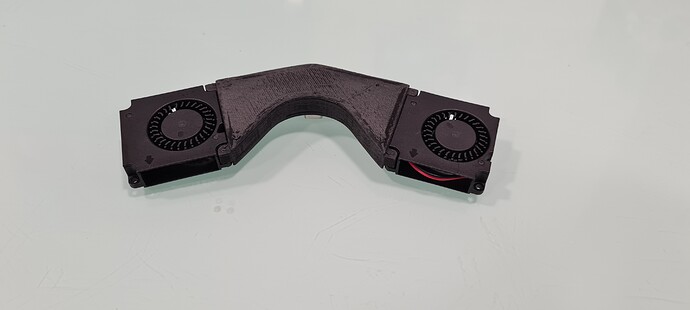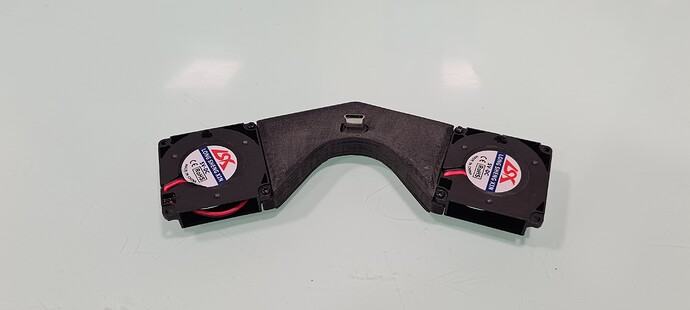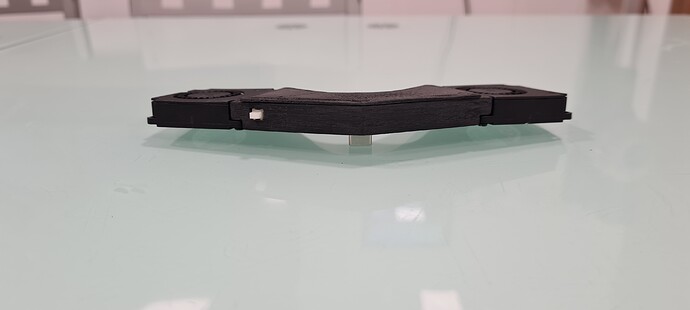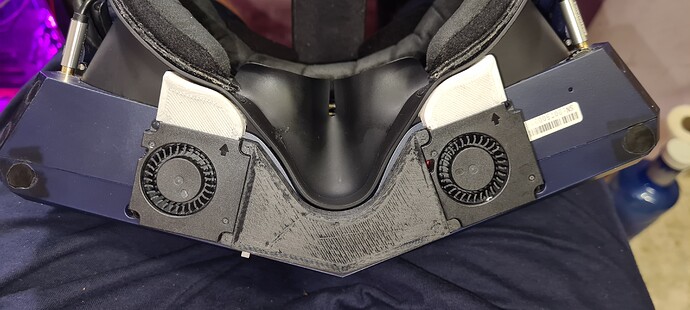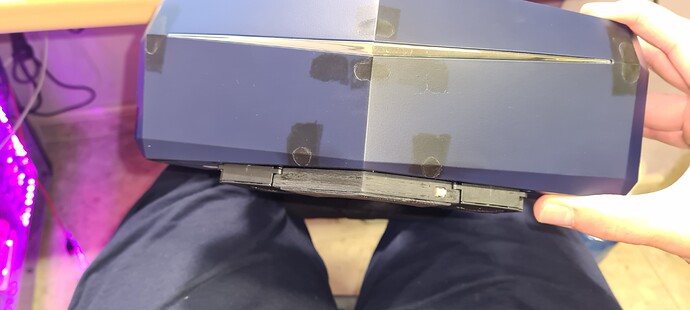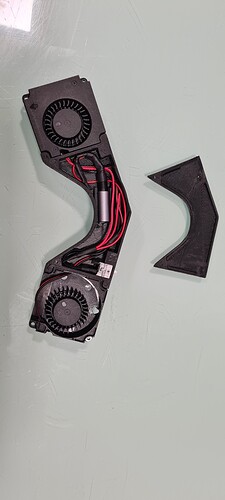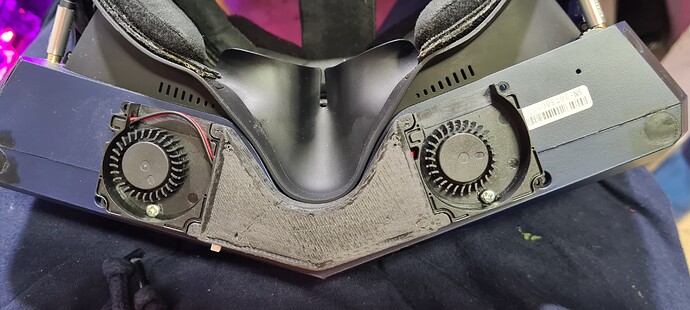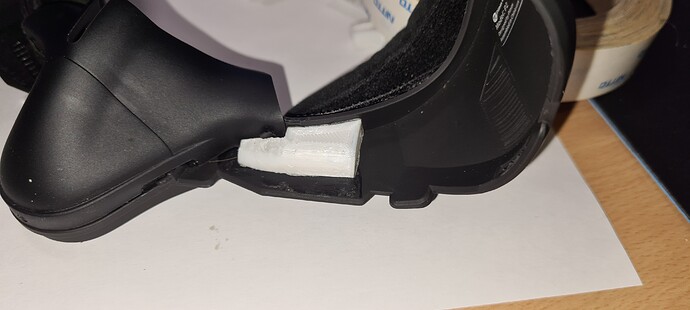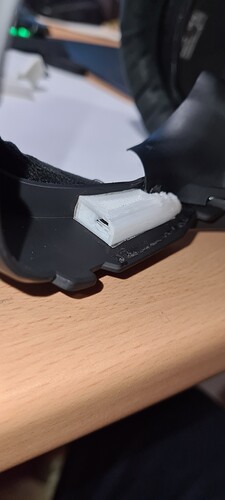Inspired by a thingiverse design I have decided to create a hand tracking style module that is easy to assemble and disassemble that is independent of external power supplies.
Here are some images of how it is using 2 turbines of 40mm and 10mm in height.
The way to fix it to the Pimax apart from the USB-C itself I also put 2 screws where the hand tracking module is fixed
I printed the 2 nozzles with flexible TPU
Without extra internal nozzles, the air current was annoying as it hit the eyes directly and had a sensation of dry eyes, thus dispersing the air better throughout the interior.
Regarding the power supply through the USB-C, it must be borne in mind that not just any cable will work, it has to have the resistance between the CC1 pin and ground of 3.4k ohms although I put a 5k ohm one and it also worked. That I was able to do it thanks to the fact that the cable I bought was from USB-C male to USB-C male and it had the CC1 cable but not the resistance. (https://www.amazon.es/gp/product/B07V6PVPKB/ref=ppx_yo_dt_b_asin_title_o01_s00?ie=UTF8&psc=1) So when you cut it you can solder the resistance between that cable and ground and try other values until you get to activate the 5V output through the VBUS Pin. It did not work for me with the famous 56k ohms. But with the resistance of 3.4k ohms between ground and CC1 you make it an OTG so it enables the USB-C port to supply 5V current. All these tests I did a mobile charger with USB-C output until I was sure that it would not damage the Pimax.
Also my idea was that absolutely nothing in the Conford kit should be modified and if I don’t need it for winter, it will be uninstalled in 30 seconds.
